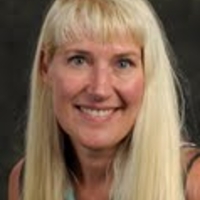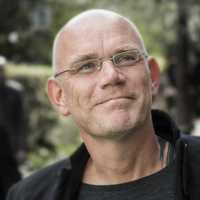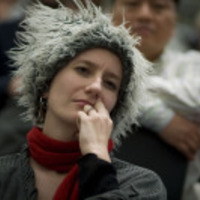
Kimberly Voss
Tenured associate professor. Author of The Food Section and a co-author of Mad Men & Working Women. Winner of AJF's Service to Food Journalism, 2014. Published more than 30 articles about women and journalism history. Focus on the 4 Fs: family, fashion, food & feminism. Blogs at WomensPageHistory. Former Vintage Cocktails columnist for the folded OKRA Magazine.
I am currently the Vice Head/Research Chair of the History Division of the Association for Education in Journalism and Mass Communication. I am also a member of Publications Board for the American Journalism Historians Association.
I spoke at the 2014 Food + Tech conference in New York City and the AEJMC conference in Montreal about social media. In 2014 I also spoke at the Association of Food Journalists meeting in Memphis and at the SPJ-sponsored Excellence In Journalism meeting in Nashville about my research.
I am currently the Vice Head/Research Chair of the History Division of the Association for Education in Journalism and Mass Communication. I am also a member of Publications Board for the American Journalism Historians Association.
I spoke at the 2014 Food + Tech conference in New York City and the AEJMC conference in Montreal about social media. In 2014 I also spoke at the Association of Food Journalists meeting in Memphis and at the SPJ-sponsored Excellence In Journalism meeting in Nashville about my research.
less
Related Authors
Noel B. Salazar
KU Leuven
Richard R Wilk
None (Private)
C. Michael Hall
University of Canterbury/Te Whare Wānanga o Waitaha
James Elkins
School of the Art Institute of Chicago
Greg Simons
Turiba University
Naim Kapucu
University of Central Florida
Javier Díaz Noci
Pompeu Fabra University
Mark Deuze
University of Amsterdam
danah boyd
Microsoft Research
Osman GÜLDEMİR
Anadolu University
InterestsView All (41)










Uploads
Books by Kimberly Voss
Papers by Kimberly Voss
Moderators: Barbara Cochran, Missouri School of Journalism; Jill Geisler (@JillGeisler), senior faculty, Leadership & Management, The Poynter Institute
Speakers: Amanda Bennett, investigative journalist and author; Marci Burdick, senior vice president broadcasting, Schurz Communications; Margaret Low Smith, President of AtlanticLIVE; Kimberly Voss, associate professor, University of Central Florida; Caryl Rivers, professor, Boston University; Kara Swisher (@karaswisher), co-chief executive officer of Revere Digital; Bryan Monroe, Washington editor, opinion & commentary, CNN
Throughout the 1960s, the Florida women’s page editors were setting the standard across the country. They were regularly giving lectures to other women’s page editors and dominated the Penney-Missouri Awards- the top journalism prize for the sections. This time period was described by Marjorie Paxson, Miami Herald and later St. Petersburg Times women’s page journalist, as the “golden era” for women’s pages.
Historian and author Kim Voss takes us on a fascinating journey with “women’s page” journalists of the 1950s and 1960s, many of whom can also be found in her 2014 book The Food Section: Newspaper Women and the Culinary Community. These food editors—often a mix of trained journalist and home economist—reported on the trends of the time and the cooks of the community. They were local celebrities, consumer advocates and reporters who helped create American cultural icons such as James Beard and Julia Child. Kimberly Wilmot Voss, Ph.D., is an associate professor of journalism at the University of Central Florida and blogs at WomensPageHistory.
Kimberly Wilmot Voss admits that her 2014 book “The Food Section” was motivated in part by spite.
The University of Central Florida associate professor had long studied journalism history with a focus on women’s pages, whose coverage of the four F’s — family, food, fashion and finishing, called “soft news” — has long been dismissed among most journalism historians as unimportant or irrelevant.
More importantly, the collection serves as a valuable aggregation of scholars and approaches for an important developing field. Historians, legal scholars, scholars of gender, journalism, film, and new media all contribute, giving the volume analytical depth to match its varied and fascinating subjects. Taken together, these case studies demonstrate the richness of this pervasive and powerful social practice, and offer new interpretations of its significance."